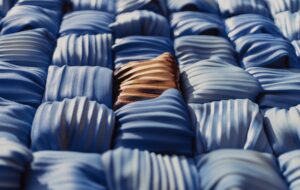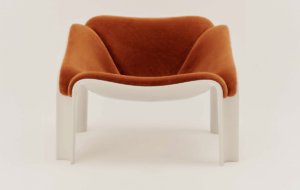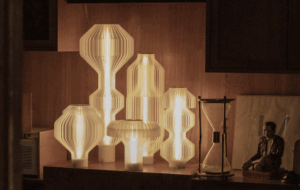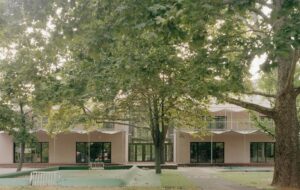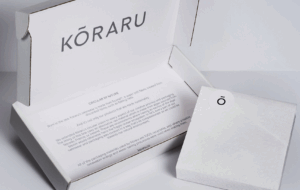
words Sam Jacob
Usually, a review of an operating system would tell you all kinds of technical qualifications, specifications and a performance-related run down. This one won’t. What it will tell you is something much less useful. The kind of things that technical reviews overlook.
I want to describe the scene that I look at more than anything else. More than people, landscapes, objects or even TV. Especially as it’s not designed to be looked at full on – an operating system is made to be background, to be incidental.
The famous 1992 court case between Apple and Microsoft about the graphical user interface was all about “look” and “feel”, and it struck me that I hadn’t really looked or felt properly. Is it possible to look into your monitor in the same way that Constable looked at the sky, Titian looked at flesh or Vermeer looked at cloth?
Here’s a recurring daydream: what it would feel like if it flopped out of the screen of my iBook. The screen bursting and the graphics becoming real, the wind blowing some away like dust while other pieces drop on to the keyboard like tiny metallic charms.
OSX was kind of a shock – after the snappy, clicky world of OS9. Up to X, the Mac had an interface of amazing utilitarian elegance – my desktop was liberally strewn with files like a teenager’s bedroom floor covered in junk. Retrospectively, OS9 is the Hunstanton School of OSs. X+ is different. It is a graphic front end on a Unix behind: a hyper-styled dashboard attached to a junkyard of chips and wires. It is in the great tradition of Las Vegas casino sheds, where the delivery of the experience is very different to the infrastructure.
This is a far cry from the early green text on black screens or the Atari 2600, eight-bit blocky pixel graphics. Long superseded, but remembered fondly as an aesthetic – just look at designers like Anthony Burrill at www.friendchip.com or Craig at www.flipflopflyin.com. Their takes on outdated graphics bring nostalgia and poetry to something once functional. In the superfast digital world they are a kind of heritage institute – keeping old-fashioned craft techniques alive. Alternatively, there are interfaces that explore more fantastical ways of organising and displaying information: see the one that’s previewing on Tomato’s site right now (www.tomato.co.uk). Apple’s Aqua interface is neither. It’s designed to be dull – but a special kind of dullness. And it is evolving qualities more like a thing or a place.
The desktop pattern has the feel of a vapour trail crossed with the geometry of mucus strands. It looks cold like a cloudless January day – like you need a scarf and mittens. If your warm breath passed through the screen it would form clouds…
Each window, which leaps into existence with a translucent zoom out of its file icon, has a brushed metal effect. The edges are rounded and lit from an unseen light above, casting a soft shadow on to the windows piled up below. They are virtual cousins of Apple PowerBook casing panels, with a few leftover bits of plastic from the old iMac range. Top left in each window there are red-orange-green coloured glass marbles resting below cut-outs. The menu bar mimics the effect of the translucent ribbed plastic casing. In the real world, these would be made with snap-together components in a Mexican factory.
OSX Panther has a real attention to materiality. The aluminium looks warm, and just a little fuzzy, like wool. Everything has a matt softness like lead – and as bookmarks are added, graphics are embossed like Helvetican hallmarks. Things become translucent when they are dragged, and transmogrify from plastic to metal as they come to the fore.
This poker-faced alternate reality ignores physics but obeys the eye. Shadows fall in unnatural ways – like the multiple shadows that conspiracy theorists see of the flag on the moon. The old icon of the hourglass has been replaced by new-agey hypnotic animations. Spinning colour wheels, bars chasing in circular patterns. Most operating systems have sought to use analogy, and here the icon of the hard disk is a drawing of part of the inside of the machine – a kind of literalism at odds with its surroundings.
The projection of the world in front of your eyes is a strange mixture – based on the idea of a desktop with pages and things scattered in layers. A mixture of plan, perspective and isometric projection. My finger tracks on the horizontal pad, resulting in vertical movements on the screen. But unlike the shock of cubism’s multiple views, this is the omniscience of the bureaucrat.
It’s a backdrop for whatever it is you are doing, or shouldn’t be doing. OSX is the coming together of Apple’s “digital lifestyle” concept. Which is both fantastic and a terrible thing, because that probably includes downloading Huey Lewis and the News while looking at animal porn. There is a conjunction of design, violence and pornography that happens on the innocent screen that could be the digital hub of Patrick Bateman’s life. Windows tracking all kinds of live information across the screen, message boards scrolling up, news tickers tracking across, windows refreshing the latest scores, all kinds of devices connecting and updating each other wirelessly, streams of copyright-infringing data flooding your down pipe. Such a torrent of bits that doing anything yourself feels insignificant. Among all of this stuff it’s hard to locate yourself – geek-work and geek-leisure all swirled up together, integrated by iSync, patched together with Rendezvous.
While we learn to adapt to new OSs and interfaces, they subtly influence our relationship to the real physical things around us. There is that strange sensation, sitting with tracing paper and pen, of reaching for “undo” – like a phantom step at the top of a staircase. While Milton had his daughters, I have my Voice 2 Type.






